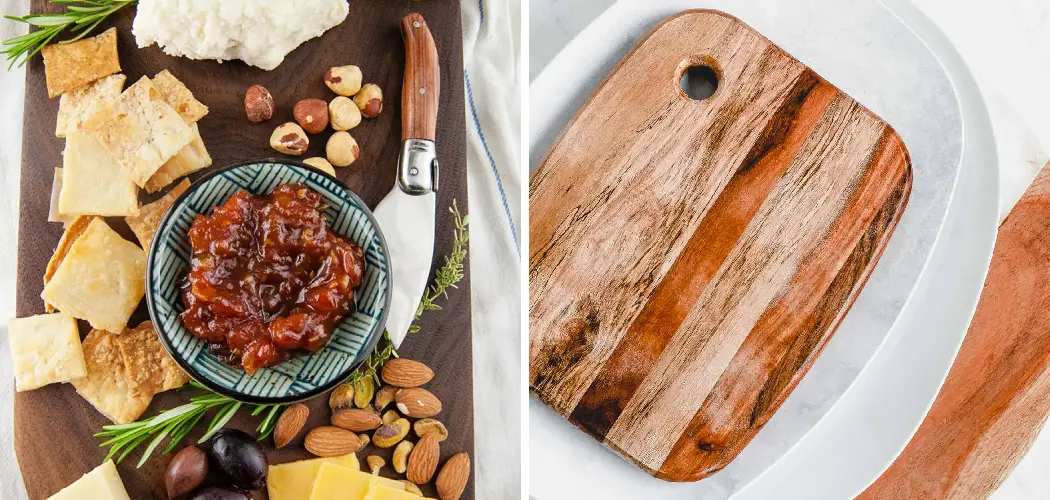Creating a wooden cheese board is not only a practical craft but also an artful way to showcase your love for fine cheeses. Whether you’re a seasoned woodworker or just beginning your journey in DIY projects, making a cheese board from wood is a satisfying endeavor. These rustic and stylish boards are not only functional for serving a variety of cheeses but also make excellent gifts or charming additions to your kitchen décor.
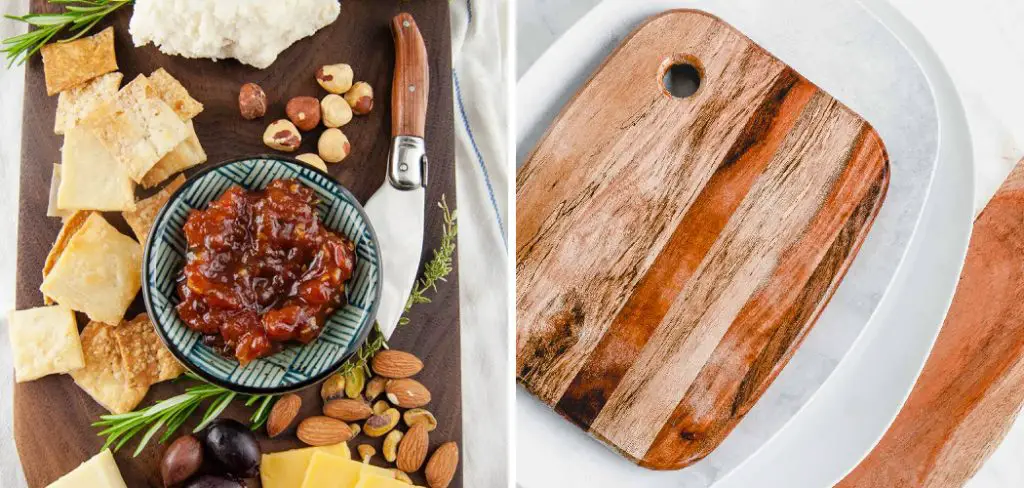
In this guide, we will delve into the step-by-step process of how to make a cheese board from wood. From selecting the right wood and preparing it to adding personalized touches, such as handles or engravings, we’ll provide you with all the tips and techniques to help you create a stunning cheese board that will elevate your entertaining and dining experiences.
The Appeal of Creating a Homemade Cheese Board
One of the most enjoyable activities for food lovers is creating and presenting a cheese board. It’s the perfect way to showcase your favorite types of cheese, along with various accompaniments such as fruits, nuts, crackers, and spreads. Not only does it make for a beautiful appetizer or snack, but it also allows you to experiment with different flavor combinations and textures.
Plus, there is something special about a homemade cheese board that you just can’t get from store-bought options.
But aside from the delicious end result, there’s a certain appeal in creating a cheese board from scratch. It allows you to be creative and use your own personal touch to make it unique and one-of-a-kind. You have complete control over what goes on the board, so it can truly reflect your taste preferences and personality. Plus, it’s a great excuse to gather friends and family and showcase your culinary skills.
Types of Wood Suitable for Cheese Boards
A cheese board is a platter made specifically for serving different types of cheeses. It can be used for individual servings or for larger gatherings and events. While there are many materials that can be used to make a cheese board, wood is the most popular and preferred option due to its versatility and aesthetic appeal.
However, not all types of wood are suitable for making cheese boards. In this section, we will discuss the different types of wood that are commonly used to make cheese boards and their unique characteristics.
Maple Wood
Maple wood is a popular choice for making cheese boards due to its durability and resistance to warping. It also has a light color and fine grain that adds an elegant touch to any cheese board. Maple wood can be quite expensive, but it is worth the investment as it can last for many years with proper care.
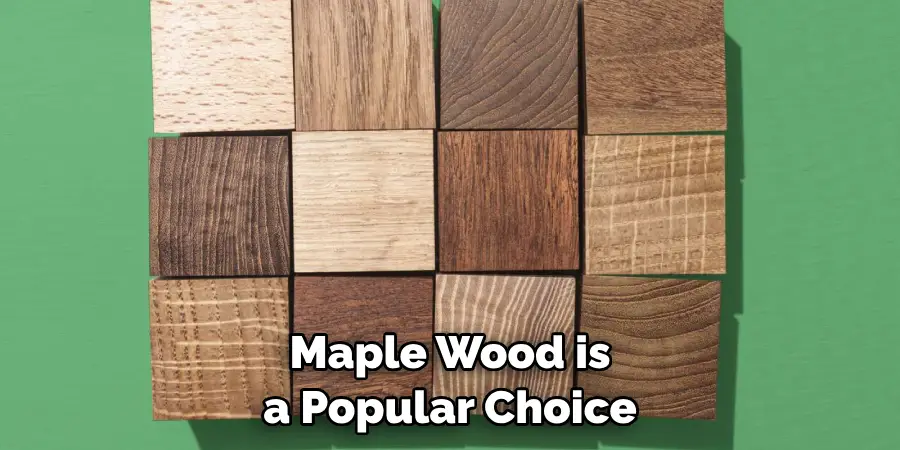
Cherry Wood
Cherry wood is another popular choice for cheese boards due to its warm color and smooth texture. It has a rich, deep red hue that becomes darker with age, adding character to the cheese board. Cherry wood also has natural antibacterial properties, making it a hygienic option for serving food.
Walnut Wood
Walnut wood is known for its strength and durability, making it a great choice for making cheese boards that can withstand heavy use. It has a dark, rich color that adds a touch of sophistication to any cheese board. However, walnut wood can be quite expensive as it is considered a premium hardwood.
Bamboo Wood
Bamboo wood is a sustainable and eco-friendly option for making cheese boards. It has a light color and fine grain that gives it a modern, minimalist look. Bamboo wood is also naturally resistant to water, making it easy to clean and maintain. However, bamboo can be quite hard and may not be suitable for cutting or slicing on the board surface.
10 Methods How to Make a Cheese Board from Wood
1. Choose the Right Wood
The first step to making a cheese board from wood is to choose the right type of wood. Hardwoods such as walnut, cherry, and maple are ideal for making cheese boards because they are durable and long-lasting.
You can also use softer woods such as pine or cedar, but these types of wood will need to be sealed with a food-safe finish to ensure that they are safe for food contact. When choosing the wood, make sure it is free from any knots or defects that could affect its strength and durability.
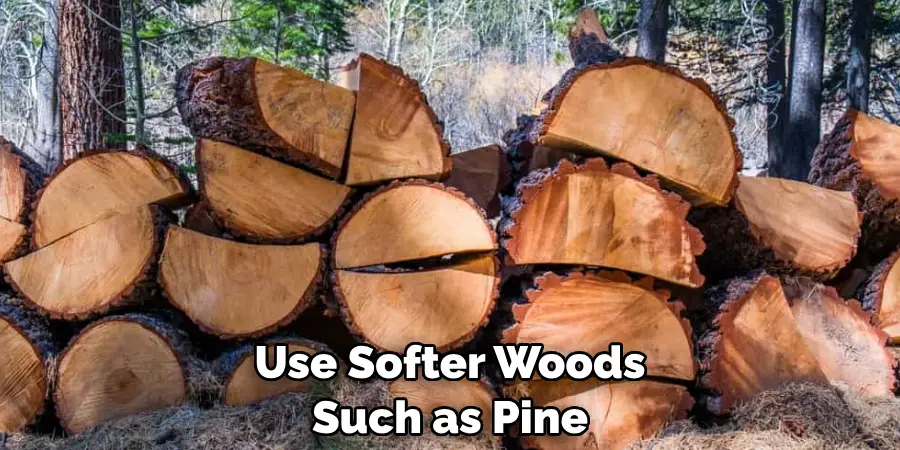
2. Cut the Pieces
Once you have chosen the type of wood you want to use, you can begin cutting the pieces for your cheese board. You will need two pieces of wood for the top and bottom of your board, as well as four pieces for the sides.
Make sure that all of your pieces are cut to the same size and shape so that your cheese board looks even and professional when it is finished. However, if you want a more rustic or unique look, you can vary the sizes and shapes of your pieces.
3. Sand Down Edges
Once all of your pieces are cut, you will need to sand down any rough edges or splinters on each piece. This will make sure that your cheese board is smooth and free from any sharp edges or splinters that could cut someone while using it.
Use a medium grit sandpaper and work in small circles until all edges are smooth and even. After sanding, wipe down your pieces with a damp cloth and let them dry completely before moving on to the next step.
4. Glue Pieces Together
Now, it’s time to glue your pieces together! Use a strong wood glue such as Titebond III Ultimate Wood Glue or Gorilla Wood Glue to make sure that your cheese board holds together securely once assembled. Spread an even layer of glue over each piece before joining them together and clamp them in place until dry.
This will usually take about 30 minutes to an hour, but be sure to check the instructions on your specific glue for drying times. To ensure a strong bond, wipe away any excess glue that squeezes out from between the pieces with a damp cloth.
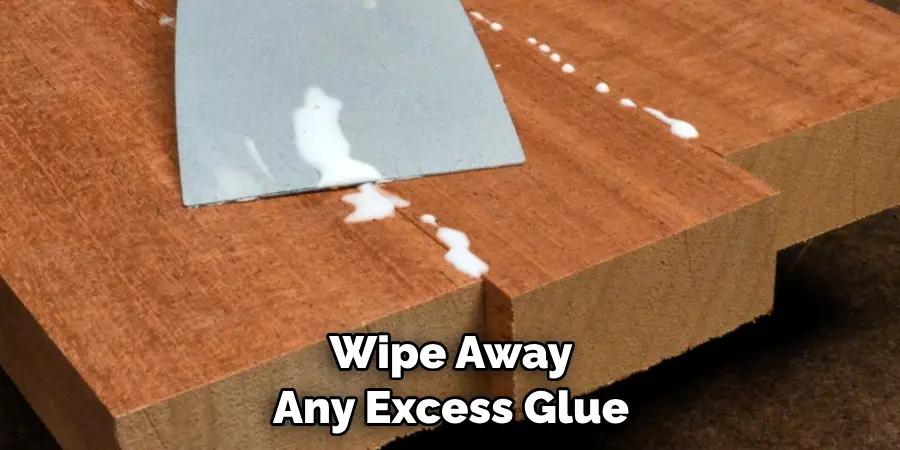
5. Drill Holes For Handles
If you want to add handles to your cheese board, you will need to drill holes into each side to attach them later on. Make sure that you use a drill bit that is slightly larger than the screws you plan on using so that they fit snugly into place when attached later on.
Once you have your holes drilled, be sure to sand down the edges of the hole to smooth them out. This will prevent any splinters from forming when handling your cheese board in the future.
6. Apply Finishing Oil
Once all of the pieces have been glued together, it’s time to apply finishing oil! Choose an oil specifically designed for use with food, such as mineral oil or beeswax paste wax finish which will help protect against staining or water damage while also providing a beautiful sheen on the surface of your wooden cheese board.
Apply one coat at a time with a clean cloth until desired coverage is achieved, then let dry completely before moving on to the next step!
7. Attach Handles (Optional)
If you decided to include handles on your cheese board, now is the time to attach them! Simply screw in each handle into its respective hole with a screwdriver until secure, then wipe away any excess glue or sawdust from around them with a damp cloth before moving on to the next step!
Additionally, you can also add a coat of wood sealant or oil to your cheese board for added protection and to enhance the natural beauty of the wood. This will help prevent any stains or damage from food and moisture.
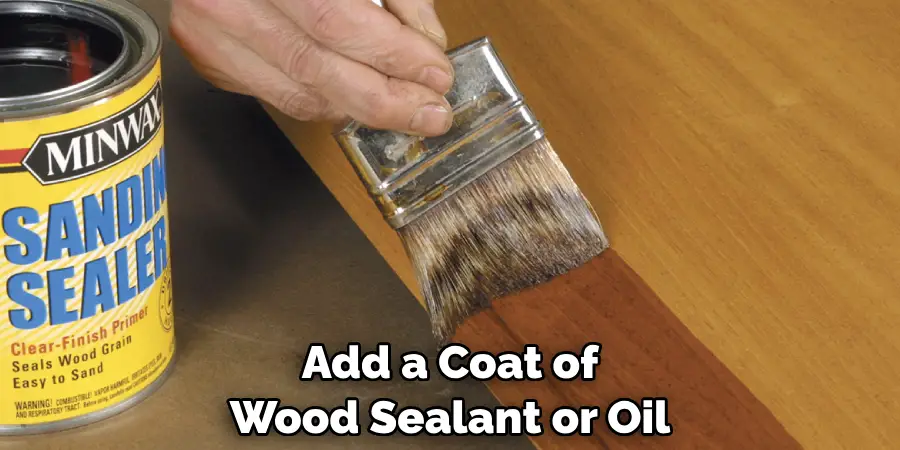
8. Sand Down Again
Before applying any sealant or finish coatings, it’s important to sand down all surfaces one last time using fine-grit sandpaper (around 400 grit).
This will ensure that there are no rough spots that could snag fingers while using your cheese board later on! Wipe away any sawdust afterward with a damp cloth before proceeding to the next step! Although this step may seem tedious, it is crucial for achieving a smooth and professional finish.
9. Apply Sealant/Finish Coating
Once everything has been sanded down again, it’s time to apply sealant/finish coating! There are many different types available, including polyurethane varnishes, lacquers, shellacs, tung oils etc., but whichever one you choose, make sure it is specifically designed for use with food products like those found in our range here at The Wooden Palette Company!
Apply two coats total allowing each coat plenty of drying time between applications before wiping away any excess product with a clean cloth afterward!
10. Enjoy Your Cheese Board From Wood!
Finally – enjoy your new handmade wooden cheese board! Not only does this make an excellent addition for entertaining guests, but it also makes an impressive gift idea – perfect for weddings, housewarmings, etc. And remember – if cared for correctly, this wooden masterpiece can last many years, so enjoy showing off this unique creation wherever possible!
Things to Consider When Making a Cheese Board from Wood
Wooden cheese boards have become increasingly popular over the years, and for good reason. They add a touch of elegance to any serving platter and can be customized to fit your personal style. But before you jump into making your own wooden cheese board, there are a few things you should consider.
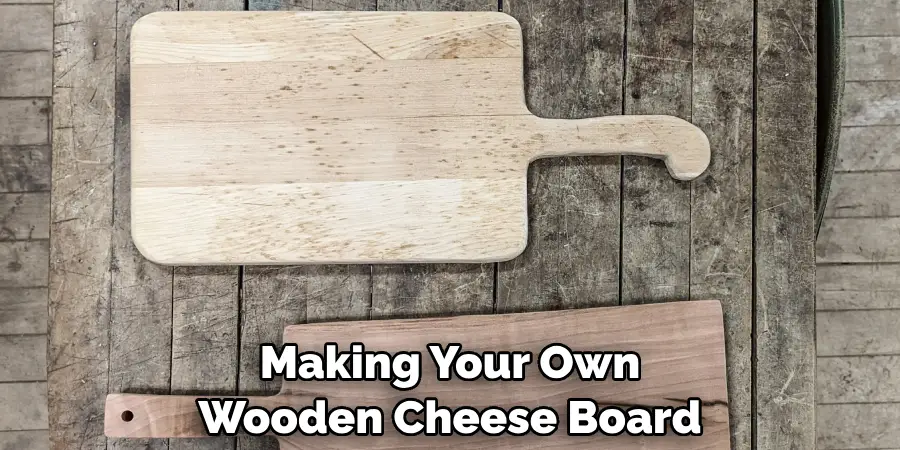
Wood Selection
The first and most important thing to consider when making a cheese board from wood is the type of wood you will use. Different types of wood have different characteristics, so it’s important to choose one that fits your needs. Some popular options for cheese boards include maple, cherry, and walnut. These woods are known for their durability and beautiful grain patterns.
Size and Shape
The size and shape of your cheese board will greatly impact its functionality. Do you want a large board for entertaining or a smaller one for more intimate gatherings? What about the shape?
Traditional rectangular boards are great for serving multiple types of cheese, while circular or irregular shapes can add visual interest to your display. It’s important to think about how you will primarily use your cheese board before deciding on its size and shape.
Finishing Options
A well-made cheese board should be treated with a food-safe finish to protect the wood and enhance its appearance. There are many options for finishes, including mineral oil, beeswax, and specialized cutting board oils. Whichever finish you choose, make sure it is safe for food contact and follow the manufacturer’s instructions for application.
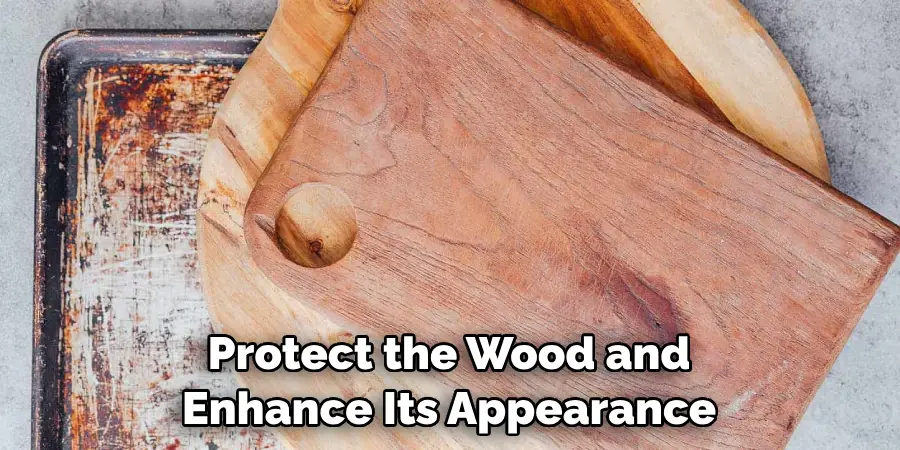
Conclusion
Crafting your own cheese board from wood is both rewarding and practical. Not only does it give you ownership over the flavors and ingredients of what goes on it, but can be an excellent conversation piece for gathering friends and family. To successfully create this item, you’ll need to select the type of wood that best compliments your kitchen or home and match the accents accordingly.
After gathering your materials, follow a few basic steps such as sanding, drilling holes for handles, staining or painting it, and finally adding hardware to hang your finished product like a pro! Thanks to its timeless design, your personalized cheese board will make any get-together more special than ever before. Now that you know how to make a cheese board from wood, why not get creative in the kitchen today?
You Can Also Check This Out to Cut a Board in Half Thickness

